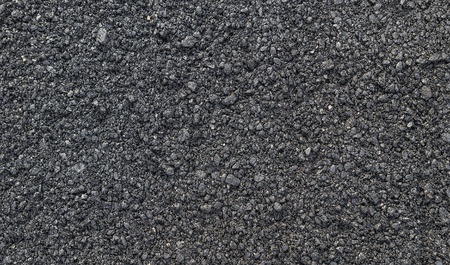Boost the Look and Feel of Your Property with Professional Commercial Parking Whole Lot Paving
Boost the Look and Feel of Your Property with Professional Commercial Parking Whole Lot Paving
Blog Article
Opening the Secrets of Warm Mix Asphalt Technology
Exploring the depths of warm mix asphalt technology reveals a world where accurate formulations and careful procedures converge to shape our roads and framework. The combination of aggregates, binders, and fillers isn't simply a building and construction job however a tactical orchestration of durability and performance.
Significance of Warm Mix Asphalt
Hot Mix Asphalt plays an important function in modern framework development as a result of its sturdiness and cost-effectiveness. As one of the most generally made use of paving material for roadways, freeways, and car parking lots, Hot Mix Asphalt provides an array of advantages that contribute to its importance in building and construction tasks. One key advantage is its capability to endure rush hour lots and harsh climate condition, giving a dependable and durable surface area for transport networks. Furthermore, Hot Mix Asphalt is cost-effective in both first building and long-lasting maintenance, making it a favored option for many framework projects.
The toughness of Warm Mix Asphalt stems from its make-up, which includes aggregates, binder, and filler materials that are thoroughly picked and mixed to meet specific efficiency demands. On the whole, the importance of Hot Mix Asphalt in infrastructure growth can not be underrated, as it proceeds to be a keystone of contemporary building and construction methods.
Elements of Asphalt Mixes
The make-up of asphalt mixes contains thoroughly picked aggregates, binder, and filler products that are essential for accomplishing certain performance demands. Aggregates are the main element of asphalt blends, providing toughness and security. These aggregates can be natural, such as crushed rock or crushed rock, or synthetic, like recycled materials from old pavements. The binder, usually bitumen or asphalt cement, holds the accumulations together and offers versatility and longevity to the mix. The option of the binder is essential as it straight affects the mix's efficiency in different climate condition. Fillers, such as hydrated lime or Rose city cement, are used to enhance the mix's workability and aging resistance. Angled Parking.
The mix and percentage of these components play a substantial duty in identifying the high quality and performance of the asphalt mix. Engineers thoroughly develop the mix to meet particular requirements, considering elements like website traffic volume, environment conditions, and pavement life-span. Appropriate choice and balancing of aggregates, binder, and fillers are essential for developing long lasting, lasting asphalt pavements.
Mixing and Production Methods

When the accumulations are picked, the binder, often asphalt concrete, is contributed to bind the products with each other. The binder's top quality and quantity substantially impact the mix's adaptability, resistance, and toughness to environmental factors. In addition, fillers like hydrated lime or Rose city concrete may be incorporated to boost certain attributes of the asphalt mix, such as its workability or dampness resistance.
Throughout manufacturing, the aggregates and binder are warmed, normally between 250-325 ° F(121-163 ° C ), to facilitate blending and make sure appropriate finish of the aggregates. The blending procedure should be complete to accomplish a homogeneous blend that promotes the preferred performance characteristics of the asphalt. Various strategies, such as batch blending or drum blending, are utilized to achieve consistent and high-grade asphalt blends for building and construction tasks.
Elements Affecting Asphalt Efficiency
Elements affecting asphalt efficiency incorporate a variety of variables that impact the toughness, longevity, and general top quality of asphalt sidewalks. One vital factor is the quality of materials used in the asphalt mix. The kind and resource of aggregates, the binder quality, and the additives all play a considerable duty in establishing the efficiency of Visit Website the asphalt sidewalk. The rank of aggregates is critical as it affects the mix's workability, stability, and resistance to breaking and rutting.

Design considerations, such as sidewalk thickness and drain, are necessary in ensuring the long-lasting performance of the asphalt pavement. By carefully considering these variables, engineers and specialists can maximize asphalt performance and improve the service life of sidewalks.
Lasting Practices in Asphalt Technology

WMA permits for the production and positioning of asphalt mixes at lower temperatures contrasted to conventional hot-mix asphalt, resulting in lowered power consumption and greenhouse gas discharges. The use of porous asphalt blends can help alleviate stormwater overflow problems by enabling water to penetrate with the sidewalk and into the ground, advertising all-natural water purification and charge processes.
Verdict
In verdict, warm mix asphalt innovation plays a critical role in modern facilities development because of its sturdiness and cost-effectiveness. By carefully stabilizing elements, employing appropriate mixing methods, and pop over here thinking about numerous aspects, designers can create premium asphalt mixes that withstand rush hour loads and severe weather. Accepting sustainable methods, such as making use of warm-mix modern technologies and recycled materials, even more enhances the ecological kindness of asphalt technology.
Blending and production methods in hot mix asphalt modern technology entail the exact mix and handling of accumulations, binder, and fillers to create a high-performance and long lasting asphalt mix.Elements influencing asphalt performance incorporate a variety of variables that influence the sturdiness, long life, and total high quality of asphalt pavements. Sustainable methods in asphalt technology incorporate numerous campaigns intended at reducing the ecological impact of asphalt production and paving processes. By incorporating recovered asphalt pavement (RAP) and recycled asphalt tiles (RAS) right into brand-new asphalt mixes, the industry can significantly minimize the intake of raw materials and energy, while additionally reducing garbage dump waste.
WMA allows for the manufacturing and placement of asphalt mixes at reduced temperatures compared to Get the facts typical hot-mix asphalt, resulting in minimized energy intake and greenhouse gas emissions.
Report this page